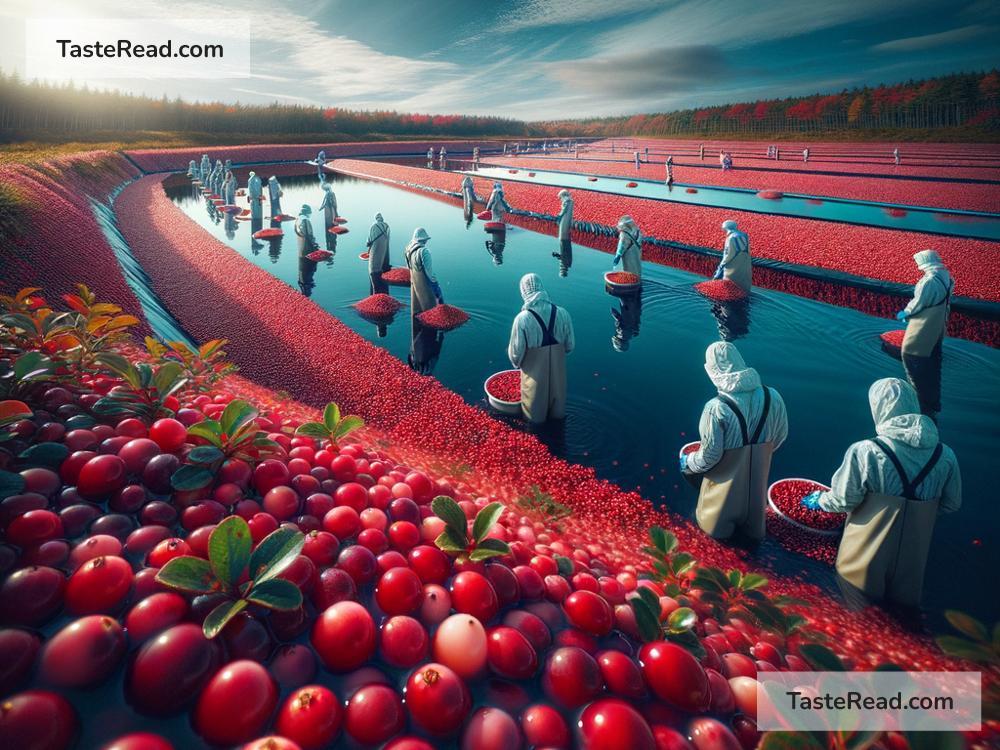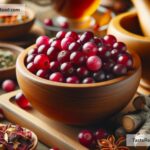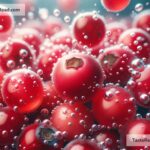Why Cranberries Float in Water During Harvesting
Cranberries are small, tart berries that are famous for their bright red color, health benefits, and use in Thanksgiving dishes like cranberry sauce. If you’ve ever seen how cranberries are harvested, you might have noticed something fascinating: the berries float on top of the water in large, flooded fields. This is an unusual harvesting method, and many people wonder why cranberries float in water while other fruits don’t. Let’s take a closer look at why cranberries float, how this helps farmers harvest them, and why this method works so well.
The Science Behind Floating Cranberries
Cranberries float in water because of something special about their structure. Inside each cranberry is a small pocket of air. These air pockets make the berries less dense than water, allowing them to float. It’s the same reason a balloon floats in a pool or a life jacket keeps you above water.
Think of it like this: if you drop a rock into water, it sinks because the rock is very dense. But if you drop a hollow ball or a sponge, it floats because of the air trapped inside. Cranberries act like little hollow balls because of the air pockets trapped in their flesh. That’s why they naturally rise to the surface of the water.
How Cranberry Farming Works
Cranberries grow on low bushes in marshy areas or bogs, which are areas of land that are wet and spongy. These bogs create the perfect environment for cranberries to thrive. Throughout the growing season, the plants stay dry, with farmers taking care of them on solid ground. But when it’s time to harvest the berries in the fall, farmers flood the bogs with water.
Flooding serves a simple but important purpose: it makes harvesting cranberries much easier. Once the bog is filled with water, the farmers use special machines to loosen the berries from the bushes. The cranberries then float to the surface, thanks to their air pockets.
Wet Harvesting vs. Dry Harvesting
There are two main ways to harvest cranberries: wet harvesting and dry harvesting. Wet harvesting, as described above, involves flooding the bogs and letting the berries float on water. Dry harvesting, on the other hand, involves using special machines to collect cranberries in dry fields without flooding.
Wet harvesting is the most common method—it’s used to collect about 90% of all cranberries grown in the United States. It’s faster, simpler, and requires less labor compared to dry harvesting. After the berries float to the surface, they are gathered into large groups using booms—floating barriers that corral the berries—and then they are scooped up or vacuumed into trucks.
Dry harvesting is usually reserved for cranberries that will be sold fresh at grocery stores. This method is gentler, as it prevents the berries from getting damaged or bruised. However, dry harvesting is slower and more labor-intensive, so it’s less popular overall.
Why Wet Harvesting Is So Effective
The floating cranberry phenomenon makes wet harvesting an incredibly efficient method. Because the berries naturally float to the surface, farmers don’t need to bend over or dig through bushes to collect them. The water helps gather all the berries in one place, making it easier to scoop them up. Additionally, using water to harvest cranberries means there’s less risk of damaging the plants. After the water is drained from the bogs, the plants remain unharmed and ready to grow again next season.
Wet harvesting also makes it possible to harvest huge quantities of cranberries at once. On a typical day, machines and workers can gather hundreds of thousands of berries using the wet harvesting method. These berries are then processed into products like juices, sauces, and dried cranberries. Since they don’t need to stay fresh for long periods of time, wet harvesting is perfect for cranberries meant for processing.
Fun Facts About Floating Cranberries
Here are a few interesting facts about cranberries and their ability to float:
-
Unique design: Cranberries aren’t the only fruit with air pockets, but their strong, waterproof skin helps trap the air inside, ensuring they stay afloat.
-
Natural bouncing test: Cranberries are known for their ability to bounce! This is because they’re firm and filled with air. In fact, early farmers used bounce tests to identify the best berries—if a cranberry bounced, it was fresh!
-
Stunning visuals: Wet harvesting creates stunning scenes in cranberry bogs. The sight of thousands of bright red berries floating on a shimmering pool of water is so beautiful that many people visit cranberry farms in fall just to see it.
Conclusion
The sight of cranberries floating in water during harvesting is not only fascinating—it’s also a reflection of clever farming techniques and the berry’s unique design. Thanks to the air pockets trapped inside each cranberry, these fruits naturally rise to the surface, making wet harvesting straightforward and efficient. Whether you enjoy cranberries in juice, sauce, or dried snacks, the floating phenomenon is just another reason to appreciate this small but mighty berry.
Next time you see a cranberry, remember—it’s not just delicious, it’s also scientifically special!


